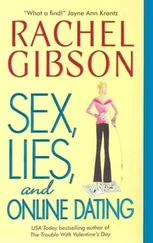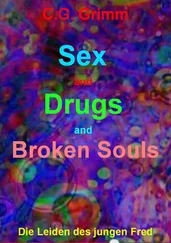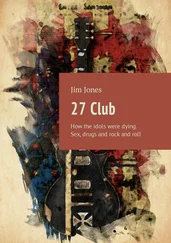That’s not the case with Saved by the Bell . Saved by the Bell wasn’t artful at all. Now, that doesn’t mean it’s bad (nor does it mean it’s good). What it means is that you don’t need to place Saved by the Bell into any context to experience it. I didn’t care about Saved by the Bell any more than I cared about The X-Files, but the difference is that I could watch Saved by the Bell without caring and still have it become a minor part of my life, which is the most transcendent thing any kind of art can accomplish (regardless of its technical merits).
When I first saw Saved by the Bell, I was a senior in high school. It was on Saturday mornings, usually right when I woke up (which I think was either 11:00 or 11:30 A.M.). It was supposedly the first live-action show NBC ever broadcast on a Saturday morning, an idiom that had previously been reserved for animation. I would watch Saved by the Bell the same way all high school kids watch morning television, which is to say I stared at it with the same thoughtless intensity I displayed when watching the dryer. I watched it because it was on TV, which is generally the driving force behind why most people watch any program. However, I became a more serious Saved by the Bell student when I got to college. I suspect this kind of awakening was not uncommon, as universities always spawn little cultures of terrible TV appreciation: When I was a sophomore, the only non-MTV shows anyone seemed to watch were Saved by the Bell, Life Goes On (that was the show about the retarded kid), Quantum Leap, the Canadian teen drama Fifteen, and Days of Our Lives . And what was interesting was that everybody seemed to watch them together, in the same room (or over the telephone), and with a cultic intensity. We liked the “process” of watching these shows. The idea of these programs being entertaining never seemed central to anything, which remains the most fascinating aspect of all televised art: consumers don’t demand it to be good. It just needs to be watchable. And the reason that designation can be applied to Saved by the Bell has a lot to do with the fundamental truth of its staggering unreality.
Saved by the Bell followed the lives of six kids at a California high school called Bayside. Architecturally, the school was comprised of one multipurpose classroom, one square hallway, a very small locker room, and a diner owned by a magician. The six primary characters were as follows:
Zack Morris (Mark-Paul Gosselaar):Good-looking blond kid with the ability to talk directly to the camera like Ferris Bueller; possessed a cell phone years before that was common; something of an Eddie Haskell/James Spader type, but with a heart of gold.
Samuel “Screech” Powers (Dustin Diamond): Über geeky Zack sycophant.
Albert Clifford “A.C.” Slater (Mario Lopez):Good-looking ethnic fellow; star wrestler; nemesis of Zack–except in episodes where they’re inexplicably best friends.
Kelly Kapowski (Tiffani-Amber Thiessen):Sexy girl next door; love interest of Zack.
Jessica “Jessie” Spano (Elizabeth Berkley):Sexy 4.00 over-achieving feminist; love interest of A.C.
Lisa Turtle (Lark Voorhies):Wildly unlikable rich black girl; vain clotheshorse; unrequited love interest of Screech.
Every other kid at Bayside was either a nerd, a jock, a randomly hot chick, or completely nondescript; it was sort of like Rydell High in Grease . There were several noteworthy kids from the Good Morning, Miss Bliss era who simply disappeared when the show moved to NBC (this is akin to what happened to people like Molly Ringwald and Julie Piekarski when The Facts of Life changed from an ensemble cast to it’s signature Blair-Jo-Natalie-Tootie alignment). Tori Spelling portrayed Screech’s girlfriend Violet in a few episodes, Leah Remini served as Zack’s girlfriend during the six episodes set at the Malibu beach resort, an unbilled Denise Richards appeared in the final episode of the Malibu run, and a now-buxom Punky Brewster played a snob for one show in the final season. Weirdly, a leather-clad girl named Tori (Leanna Creel) became the main character for half of the last season when Thiessen and Berkley left the show, but then they both reappeared at graduation and Creel was never seen again (I’ll address the so-called “Tori Paradox” in a moment).
But—beyond that—the writers of Saved by the Bell always seemed to suggest that most adolescents are exactly the same and exist solely as props for the popular kids, which was probably true at most American high schools in the 1980s. [49] 2. This is less true now, since unpopular kids are more willing to wear trench coats to school and kill everybody for no good reason.
The only other important personality in the Bayside universe is Mr. Belding (Dennis Haskins), who is a principal of the John Hughes variety; there is no glass ceiling to his stupidity. However, Belding differs from the prototypical TV principal in that he tended to be completely transfixed by the school’s most fashionable students; he really wanted Zack to like him, and Belding and Morris would often join forces on harebrained schemes.
On the surface, Saved by the Bell must undoubtedly seem like everything one would expect from a dreadful show directed at children, which is what it was. But that’s not how it was consumed by its audience. There was a stunning recalibration of the classic “suspension of disbelief vs. aesthetic distance” relationship in Saved by the Bell, and it may have accidentally altered reality (at least for brief moments).
Here’s what I mean: In 1993, Saved by the Bell was shown four times a day. If I recall correctly, two episodes were on the USA Network from 4:00 to 5:00 P.M. CST, and then two more were on TBS from 5:05 to 6:05. It’s possible I have these backward, but the order doesn’t matter; the bottom line is that I sometimes watched this show twenty times a week. So did my neighbor, a dude named (I think) Joel who (I think) was studying to become a pilot. Sometimes I would walk over to Joel’s place and watch Saved by the Bell with him, and he was the type of affable stoic who never spoke. He was one of those quiet guys who would offer you a beer when you walked into his apartment, and then he’d silently drink by himself, regardless of whether you joined him or not. Honestly, we never became friends. But we sort of had this mute, parasitic relationship through Saved by the Bell, and I will always remember the singular significant conversation we had: We were watching an episode where Belding was blackmailing Zack into dating his niece, and Joel suddenly got real incredulous and asked, “Oh, come on. Who the fuck has that kind of relationship with their high school principal?”
Of all the things that could have caused Joel to bristle, I remain fascinated by his oddly specific observation. I mean, Bayside High was a school where students made money by selling a “Girls of Bayside” calendar, and it was a school where oil was discovered under the football team’s goalposts. This is a show where Zack had the ability to call timeout and stop time in order to narrate what was happening with the plot. There is never a single moment in the Saved by the Bell series that reflects any kind of concrete authenticity. You’d think Zack’s unconventional relationship with an authority figure would be the least of Joel’s concerns. However, this was the only complaint he ever lodged against the Saved by the Bell aesthetic, and that’s very telling.
Читать дальше












